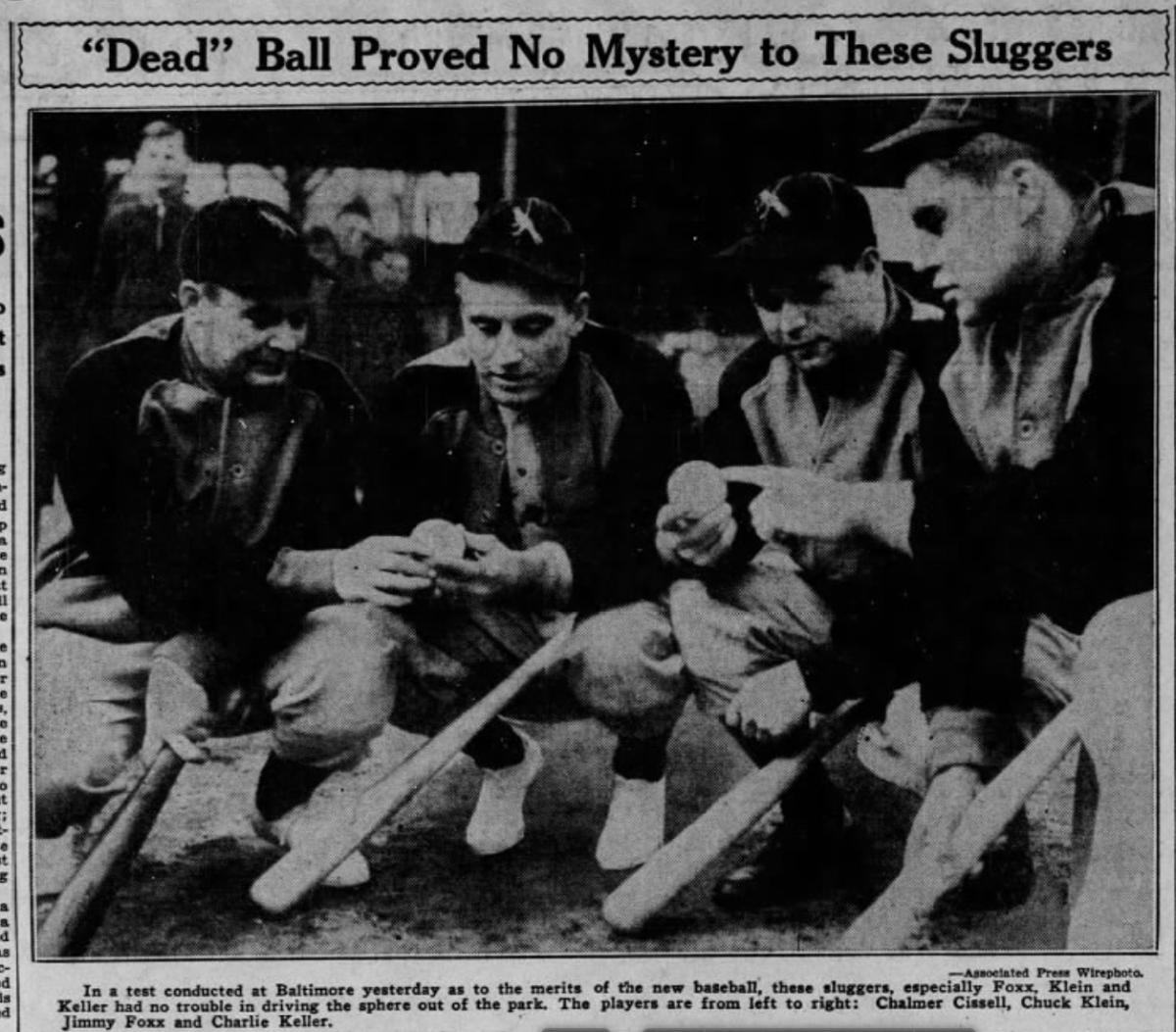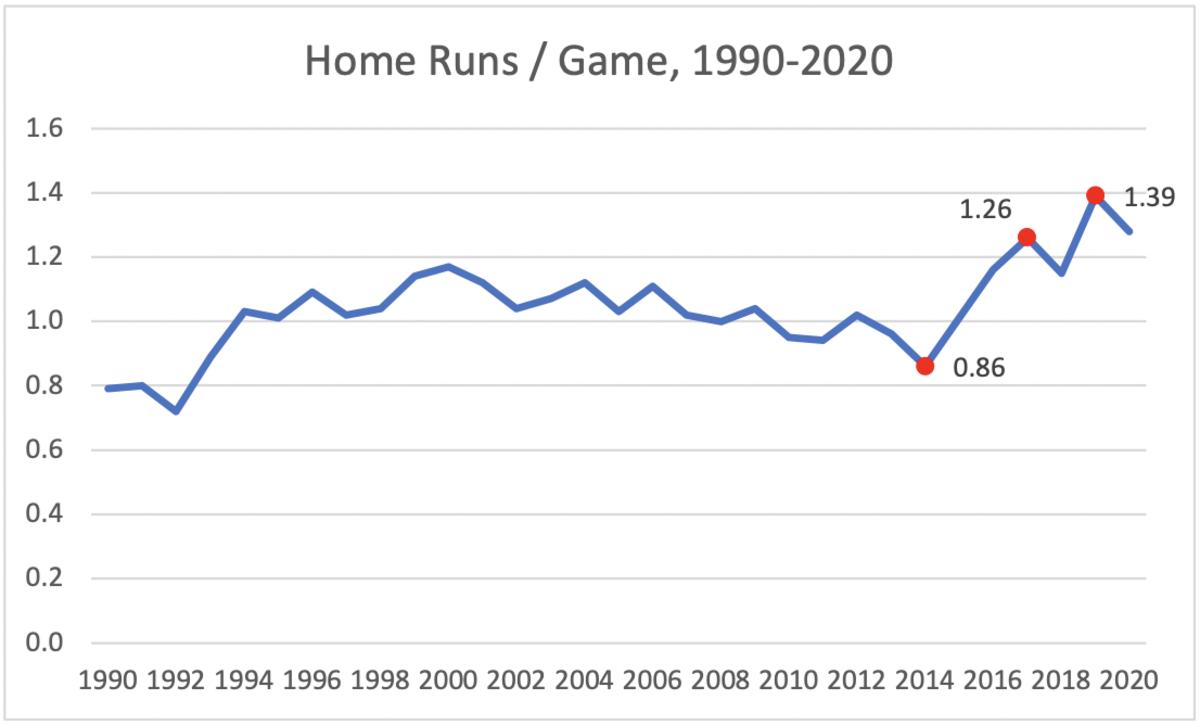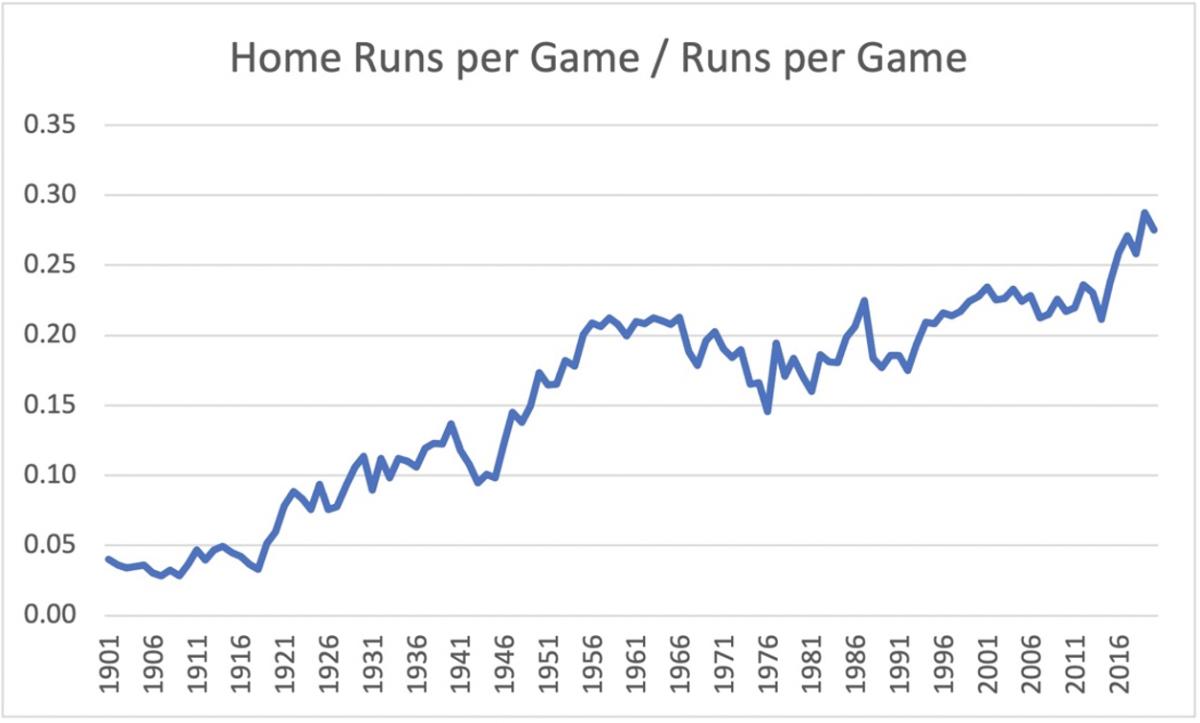Deadening the Baseball? MLB's Done It Before
On Jan. 10, 1938, four ballplayers met to take batting practice on a freezing day in Baltimore. They were Jimmie Foxx, the three-time home-run leader; Chuck Klein, the slugging right fielder; Bill Cissell, the light-hitting veteran; and Charlie Keller, the minor league batting champ. It was a rather strange group—all played for different teams, with different styles, and, again, it was the middle of January. But MLB had wanted to see an assortment of hitters, and they needed to take care of this before spring training, no matter how cold it was. They were there to test out a new baseball—a deadened ball, with raised seams and loosened twine, designed to take some of the offense out of the game.
The “dead-ball era” had been over for a decade and a half by this point. That period of low offense, from 1900 to 1920, hadn’t been due so much to the baseball itself as it had been to the fact that balls were allowed to stay in the game no matter how scuffed or damaged they were. But as in-game baseballs became more regulated, offense spiked, and by that January day in 1938, some people around the game were starting to worry: Were there too many home runs? Was this fair to pitchers? Did fans miss small-ball? Should they push the game back to the way it used to be? The National League’s clubs voted in favor of trying to accomplish this with a new ball. The American League—led by the Yankees, who were loath to give up any bit of their best-in-baseball offense—pushed back. Since the leagues operated as functionally separate entities, this wasn’t an issue, and they came to an agreement. The NL would try out a new, deader ball while the AL would keep the old, livelier one. And they’d gather in Baltimore in January for a group of hitters to test out both of them before spring training.
The difference between the new ball and the old was obvious to the ear—a “soggy whoosh” versus a “socking whack,” in the words of the Associated Press. The players were still able to clear the fence easily in batting practice. But it felt different, they said: Foxx estimated that it might knock only a few points off the average of an elite hitter such as himself but perhaps as much as 20 for someone who hit, say, .275. Klein noted that it was fine “if you like a whooshy ball.” Meanwhile, the pitcher for the day, Baltimore right-hander Johnnie Wittig, loved it: “The raised stitches on the dead ball give the pitcher a better chance to curve,” he said.

The new ball was put in play three months later. But people soon stopped talking about it. (The NL got off to a surprisingly hard-hitting start, which had some sportswriters initially wondering if the whole thing hadn’t been a ruse, designed to juice interest among fans.) Over the next several years, the ball's specifications continued to evolve, and that January round of BP in Baltimore became an odd historical quirk rather than the birth of a new status quo for the baseball. But it serves now as a worthwhile reminder: baseball, and the baseball, have been here before.
On Monday, The Athletic reported MLB had sent teams a memo saying that the ball would be deadened for 2021. SI's Stephanie Apstein and astrophysicist Dr. Meredith Wills confirmed the report and documented changes to the ball that occurred last season. MLB's memo provides a level of clarity that’s appreciated after years of uncertainty: As the home-run rate has swung dramatically over the last few seasons, clubs have been left wondering just what, exactly, is going on. The public theories have ranged from deliberate manipulation of the ball to shoddy quality control to options that don’t have to do with the ball at all. (Launch-angle revolution, anyone?) Now, at least, there is a clear stated direction. The ball will be a bit deader next season; home runs, and the offenses that they support, should decrease accordingly.

But it’s hard to predict just how much that deflation might be—The Athletic notes that a similar change to the coefficient of restitution, or “bounciness,” led to a 14% drop in slugging and a reduction in homers by one-third in Korea. The ball there got larger as it got less bouncy, however, which will not be the case in MLB, so the shift here is difficult to nail down.
While a year-to-year change in offense that large would be unusual for MLB, it’s not unheard of. Home runs increased by almost exactly one-third in several seasons in the 1920s, as the league was pulling out of the dead-ball era, and again in 1969, after the changes implemented to counter the Year of the Pitcher. They decreased by that much in 1988—after rumors had flown of an unusually lively ball in 1987. “It is simply lodged in the mythology of American sport that on a regular basis, they juice up the baseball. No one ever explains exactly who they are, or why on earth they would want to do it, if indeed there were a they,” Frank Deford wrote in SI at the time.
Of course, for all the historical parallels, the current situation is still its own. MLB’s offense has never been so supported by home runs before—meaning that if a deader ball manages to decrease homers significantly, offenses as a whole could collapse, which could hypothetically get baseball closer to a true dead-ball era than it’s been since … well, you know.

The broader outlines of this discussion, however, are still familiar. In 1929—almost a decade before the league would come around to openly trying another ball in 1938—the question of what to do here was posed to major and minor league managers in a survey by United Press International. Some of the answers feel like they could have just as easily come from the last few years. “Fans are growing tired of slugfests and are turning their interest to other sports,” said one manager. “The lively ball is a good thing,” countered another. “It is a little tough on pitchers, but it certainly puts more action in the game, and that’s what the fans want.” It’s an aesthetic debate as much as a technical one.
As for how the conversation will take shape on the deadened ball for 2021? Baseball will have heard it before.
